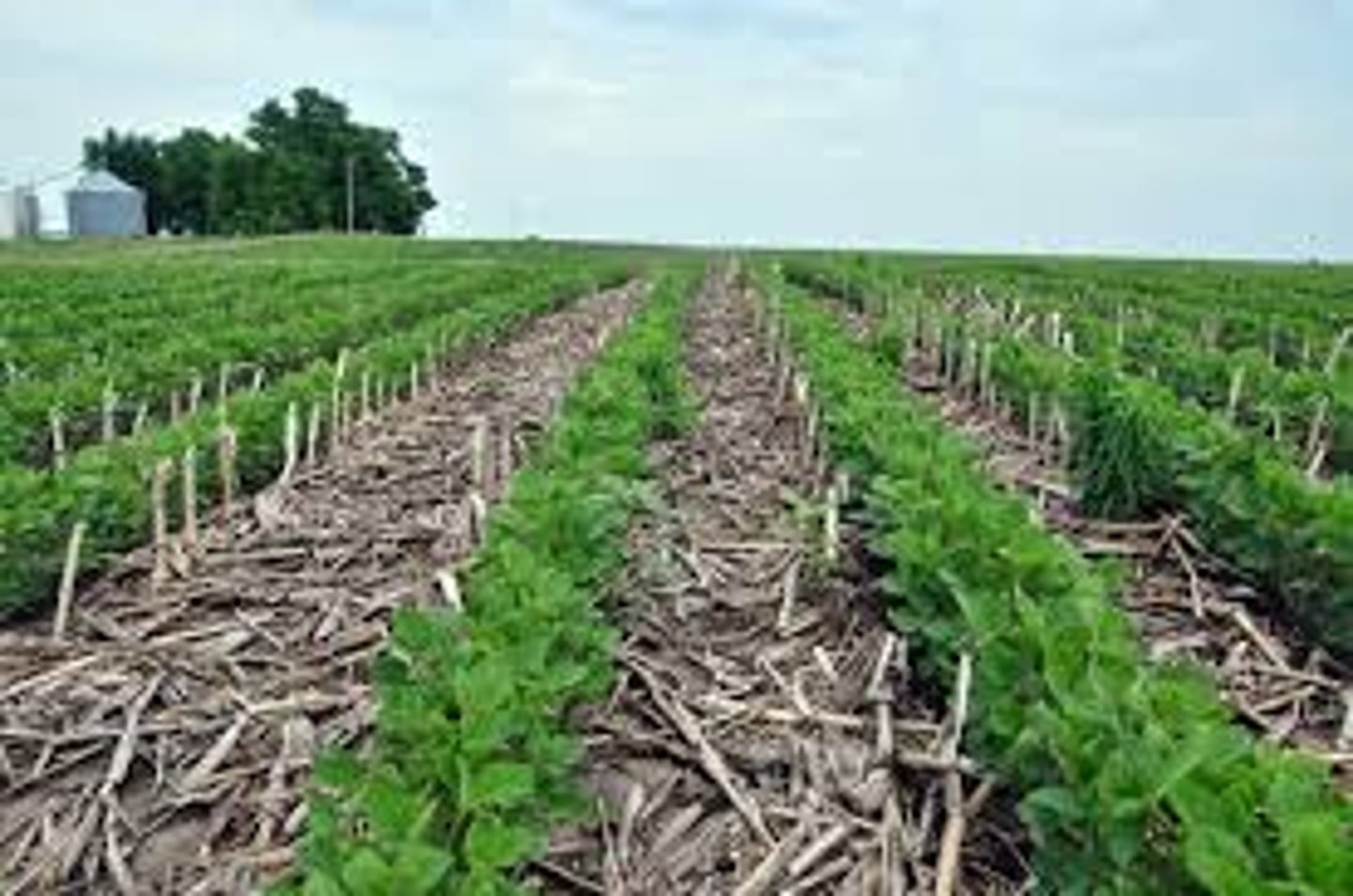5) Soil + Agriculture
1/45
There's no tags or description
Looks like no tags are added yet.
Name | Mastery | Learn | Test | Matching | Spaced |
|---|
No study sessions yet.
46 Terms
Importance of soil (UNFAO)
"soils are essential for achieving food security and nutrition and have the potential to help mitigate the negative impacts of climate change"
- Achouri, Director of UNFAO (2015)
UNFAO
United Nations Food and Agriculture Organisation
Significance of soil
- They sustain 95% of food production
- They host over ¼ of the planet's biodiversity
- They are a major source of pharmaceuticals (e.g., antibiotic compounds)
- Play a critical role in the water and carbon cycle
What is soil?
· Mineral matter - minerals from chemical and physical weathering if the parent material
· Organic matter - from decaying plants and organisms
· Water
· Air
... mixture of solid, water and gases
Soil Formation
- climate
- relief
- vegetation
- humans
- soil biota
- parent material
- drainage
- time
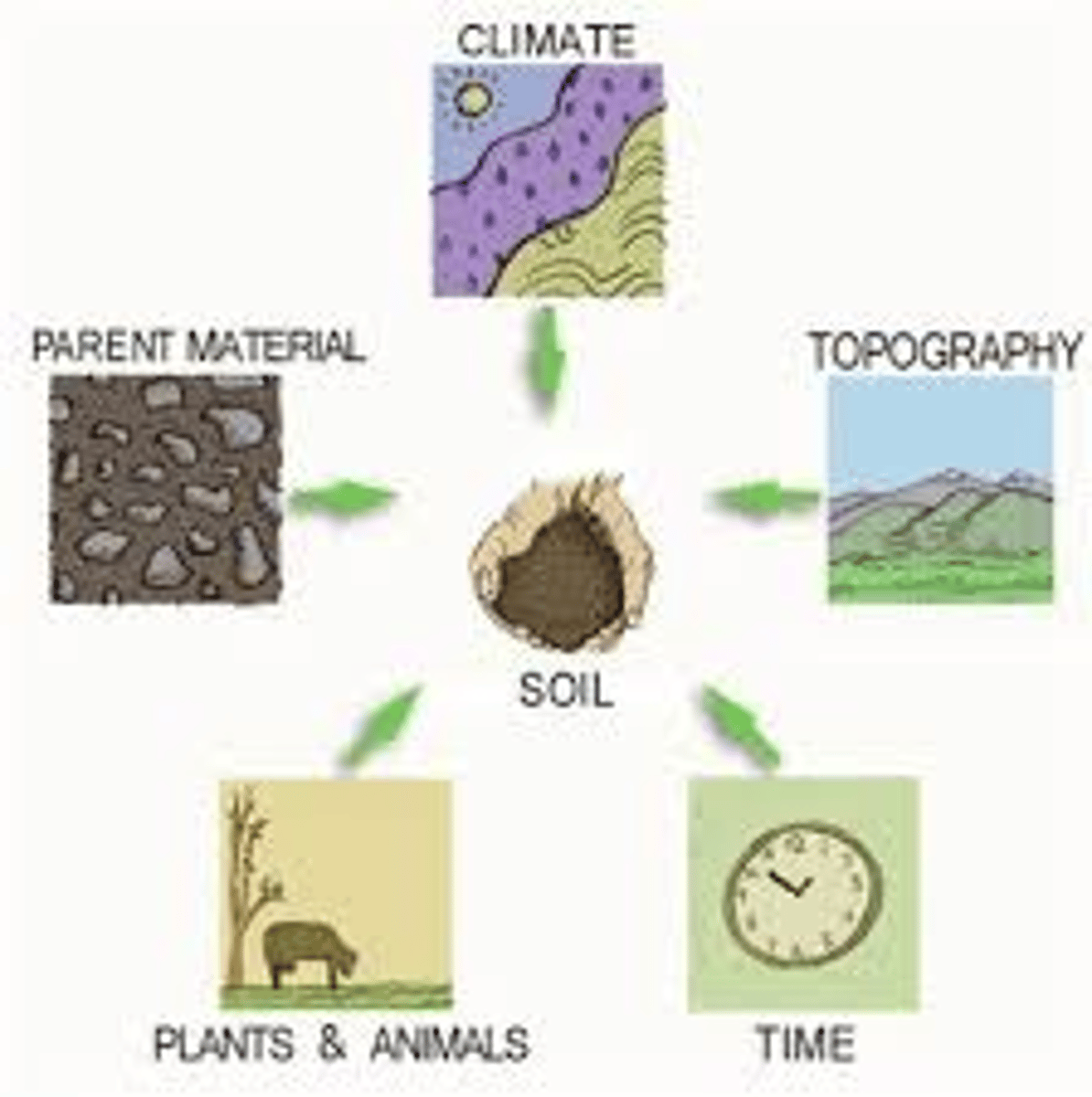
Soil and climate
white = glacier/ice
Grey = rocky mountain soil
Teal = podsol/tundra soil
purple =grey forest soils
green= brown earth deciduous forest soil
orange = red and brown "mediterranean woodland" soil
red = red and yellow tropical rain forest and savanna soils
dark blue = dark grey and black soils of tropics and subtropics (vertisols)
light blue = red and grey soils of the desert
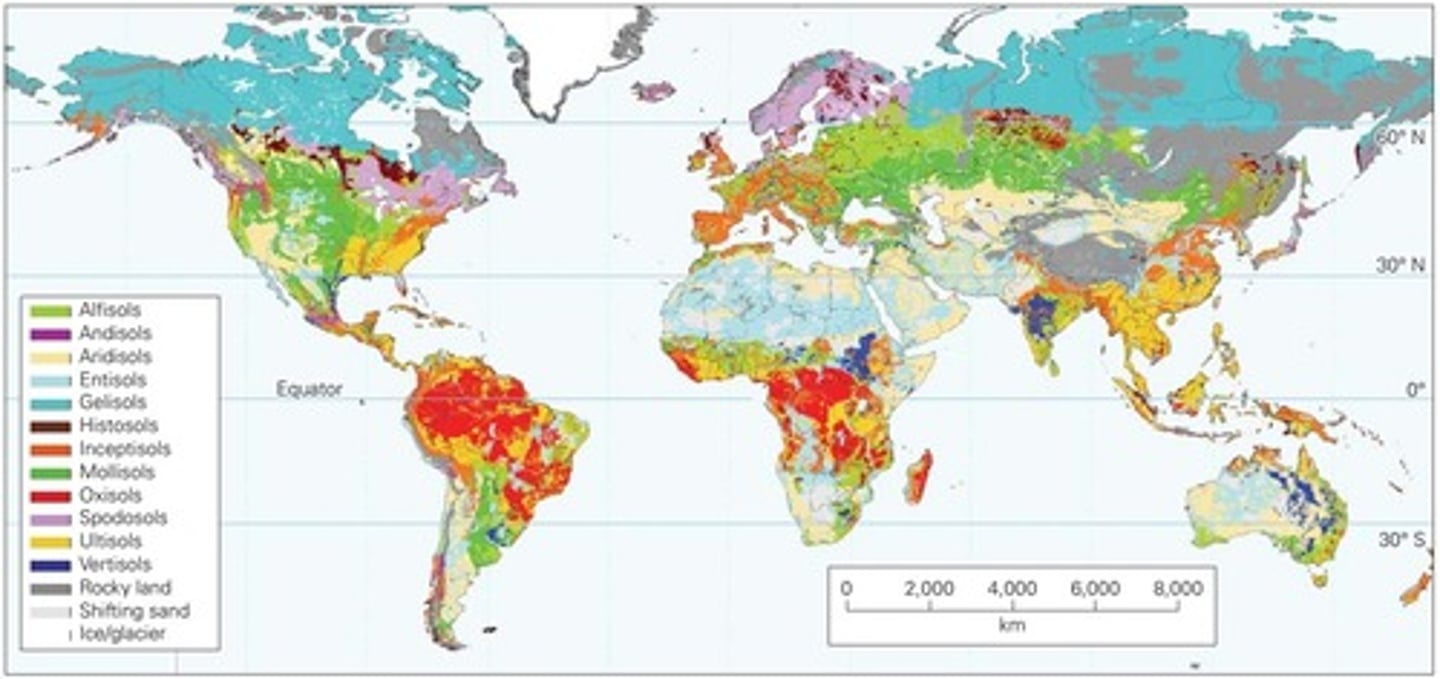
Soil Profile
- Bedrock
- Parent material
- Subsoil
- Topsoil
- Surface layer
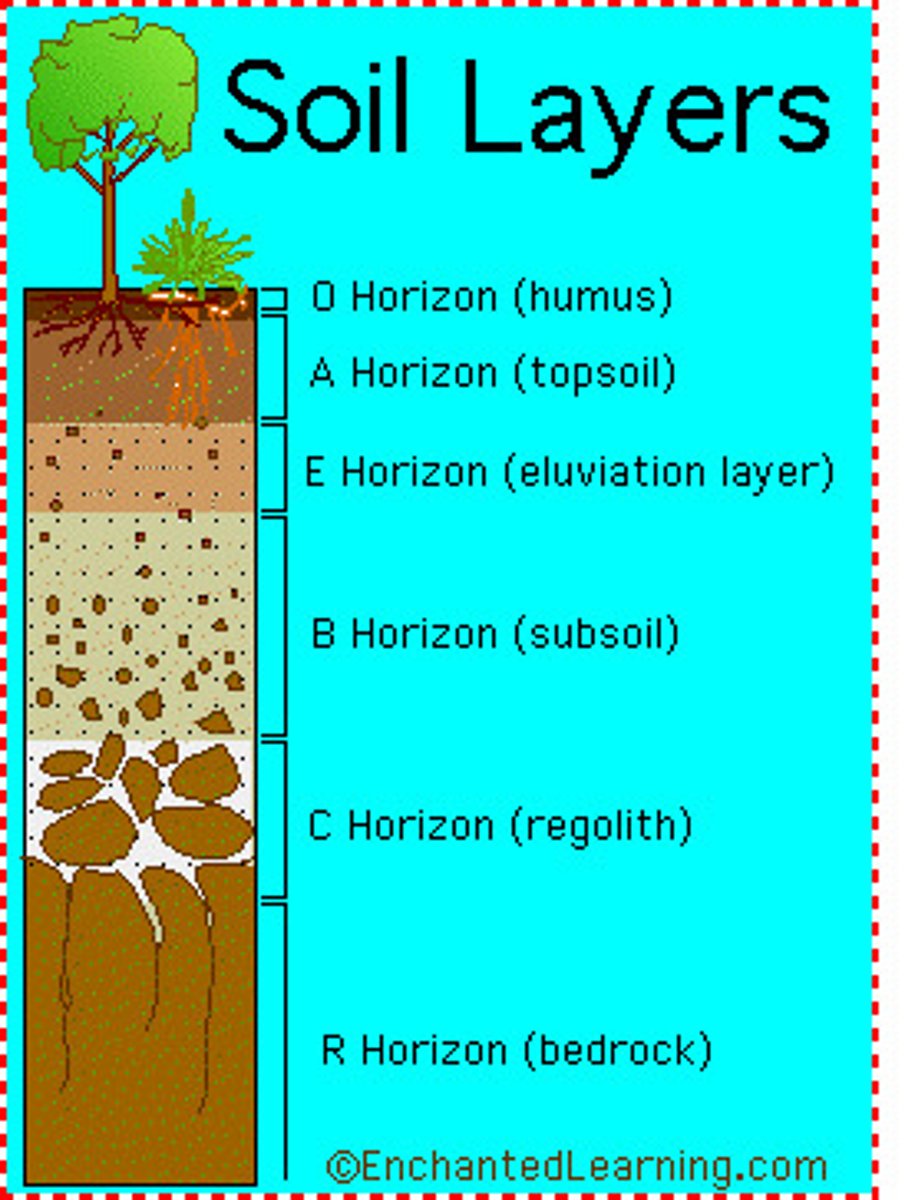
Zonal soils
= fully developed soils
--> in a state of dynamic equilibrium with the climate, vegetation, and parent rock, developed over a significant period of time
... often covers a wide geographical area
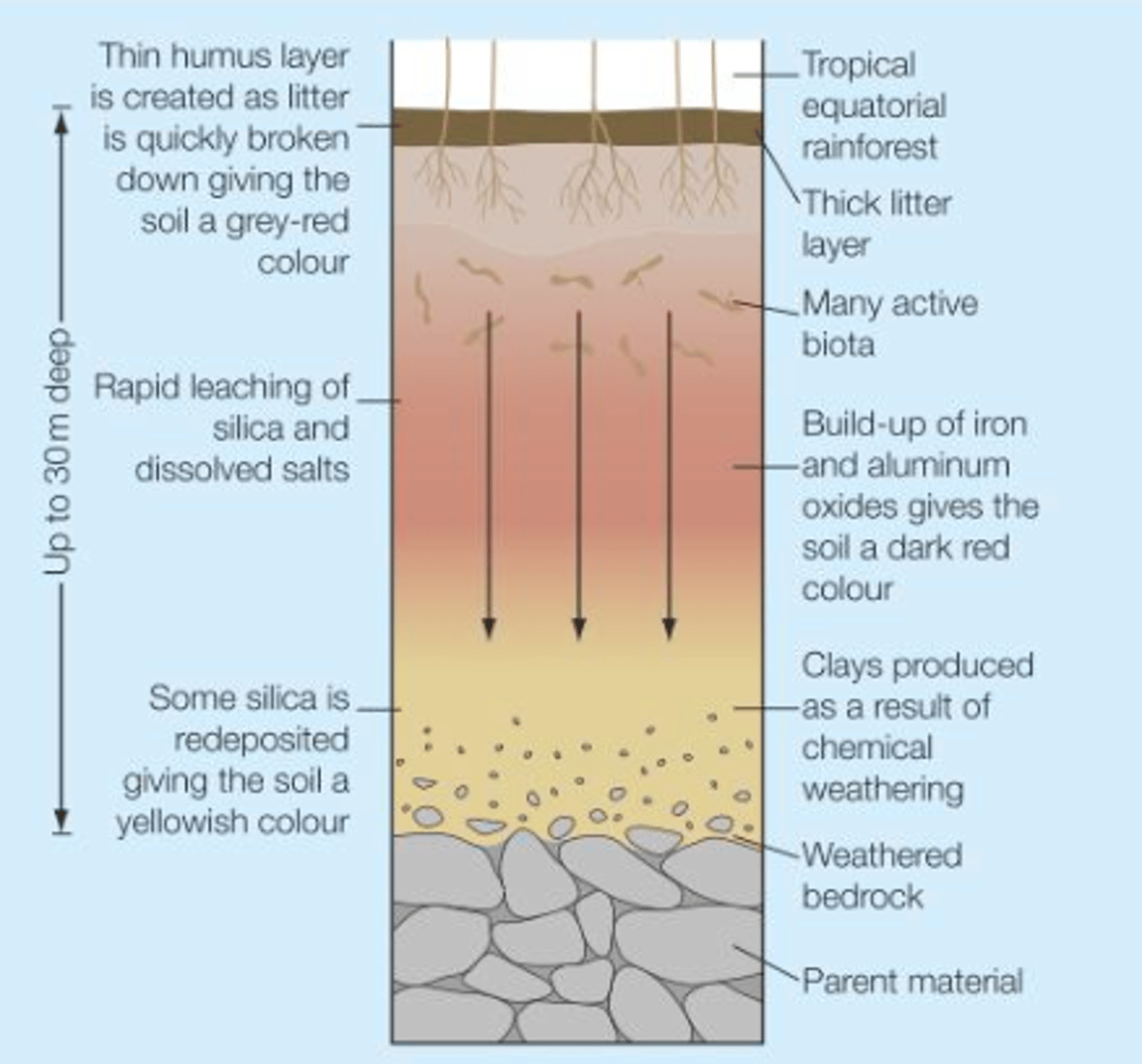
Podsol soils
Northern Coniferous forests
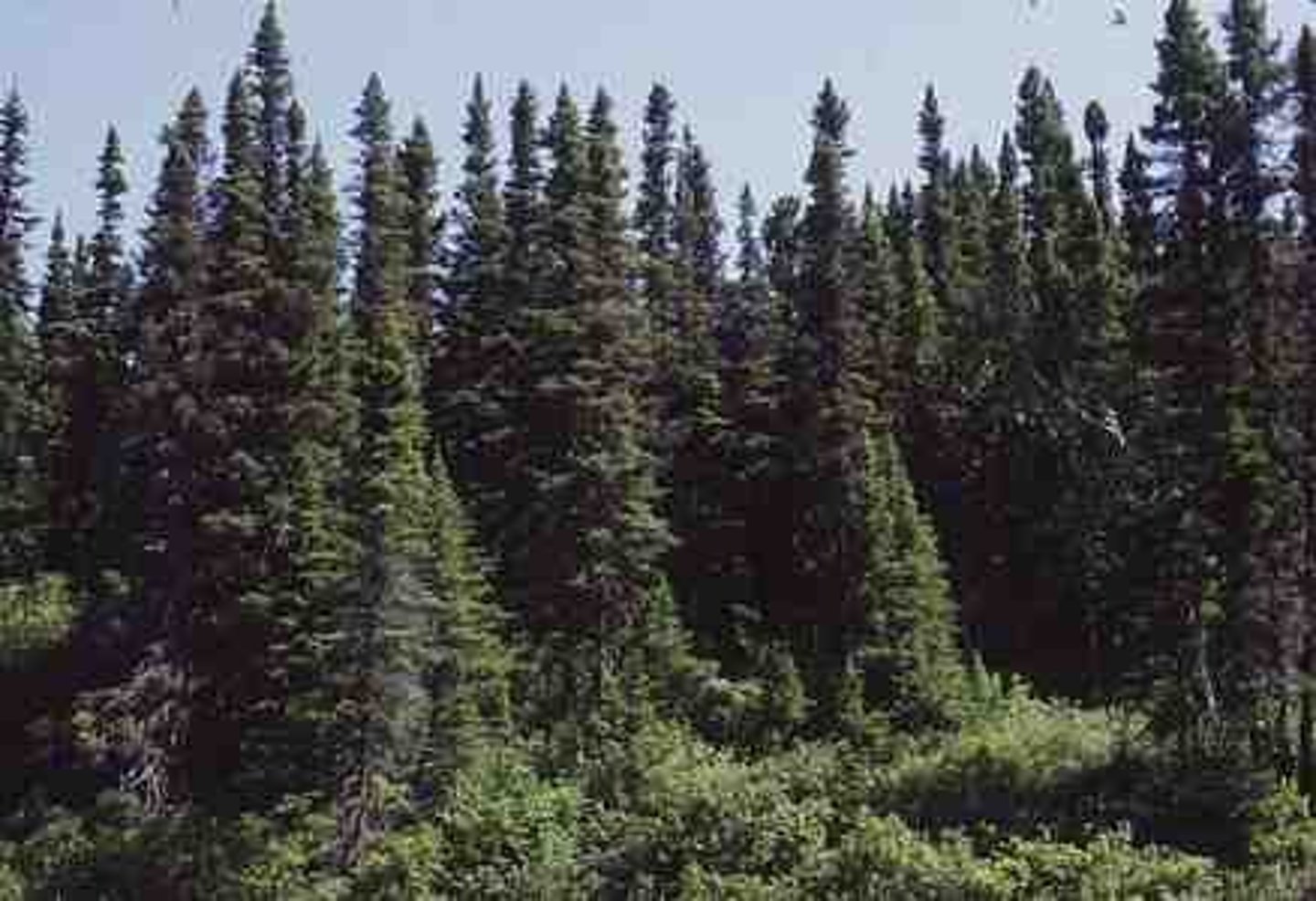
Podsol soils: Climate
- Long, cold winters and short mild summers
- Precipitation can be variable - low to fairly heavy
-precipitation exceeds evapotranspiration
- Considerable snowfall, leading to spring snowmelts
- Leads to low soil biota activity and slow decomposition
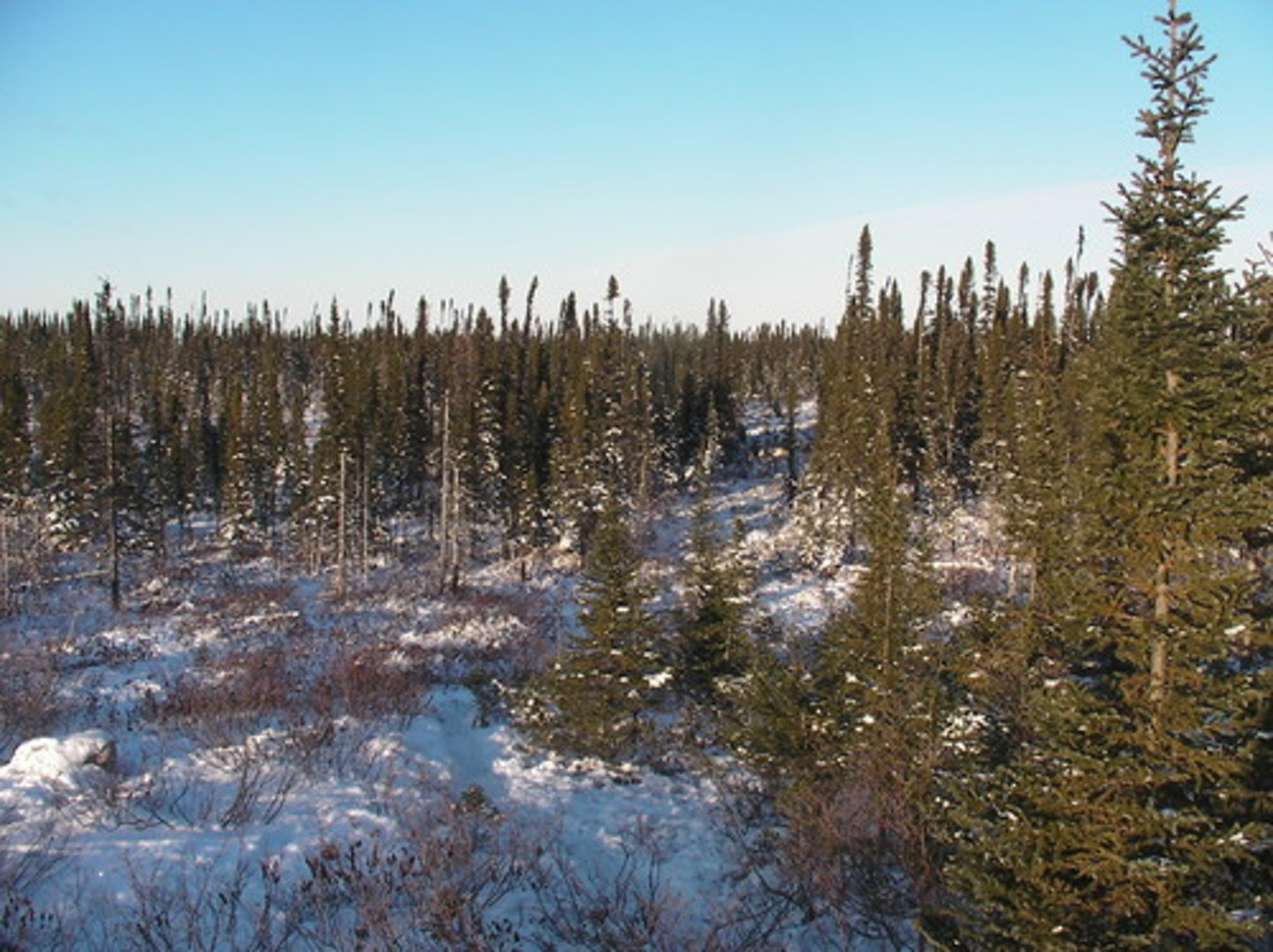
Podsol soils: Relief and Drainage
- On mountain sides or tops, up to 350m
- Precipitation and drainage lead to rapid leaching or iron and aluminium oxides (eluviation) from the A horizon leaving it rich in silica and ash-grey in colour
The deposition of iron oxides in the B horizon (illuviation) creates a red-brown colouring and may concentrate to form a thin solid layer called an iron-pan
... this impedes drainage and can cause waterlogging
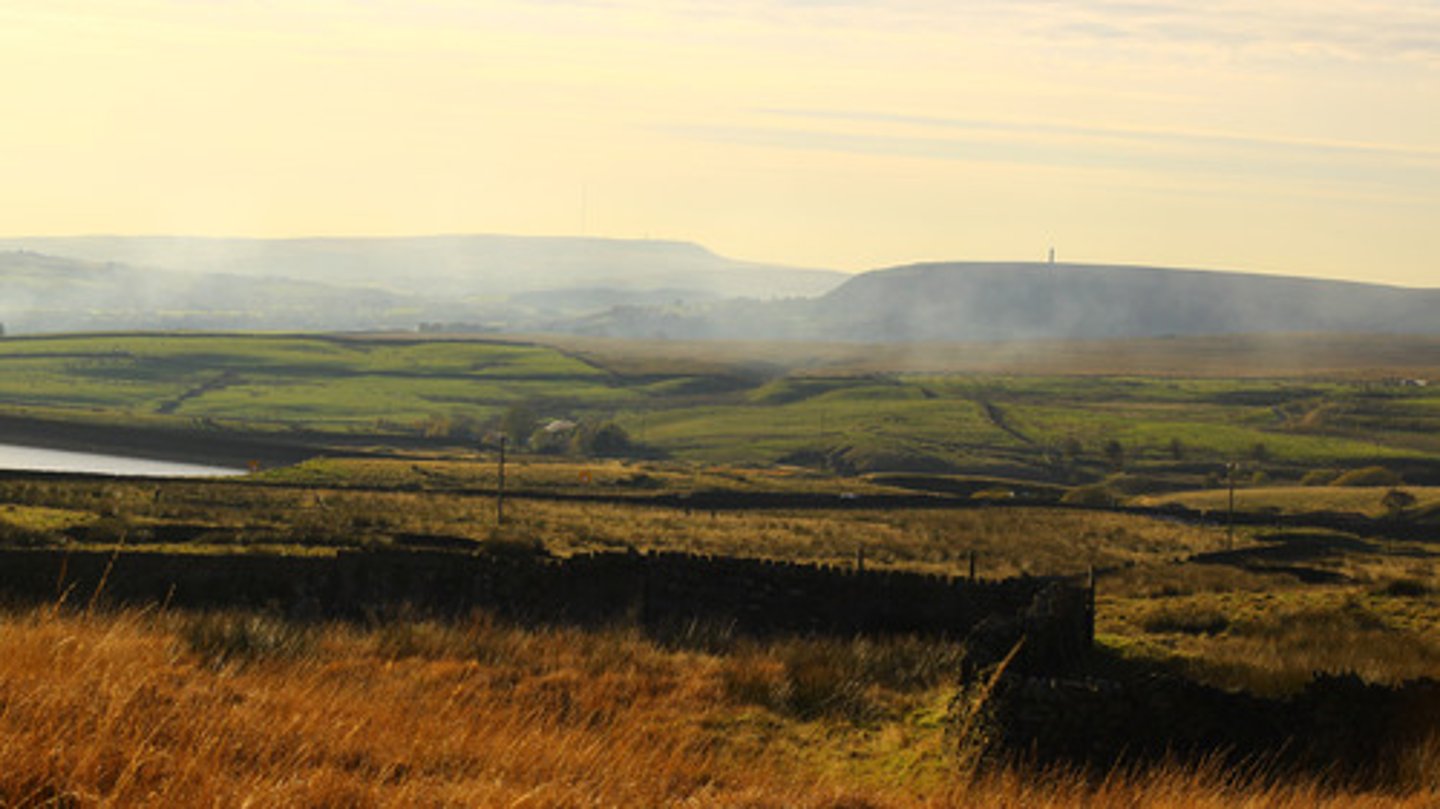
Podsol soils: Type of Soil
Heavy with aluminium and iron, leading to highly acidic soil. This soil has clearly defined horizons

Podsol soils: Natural Vegetation
- Coniferous trees (pines, spruces, firs) produce litters of needles and pines, creating a thin acidic humus (more acidic)
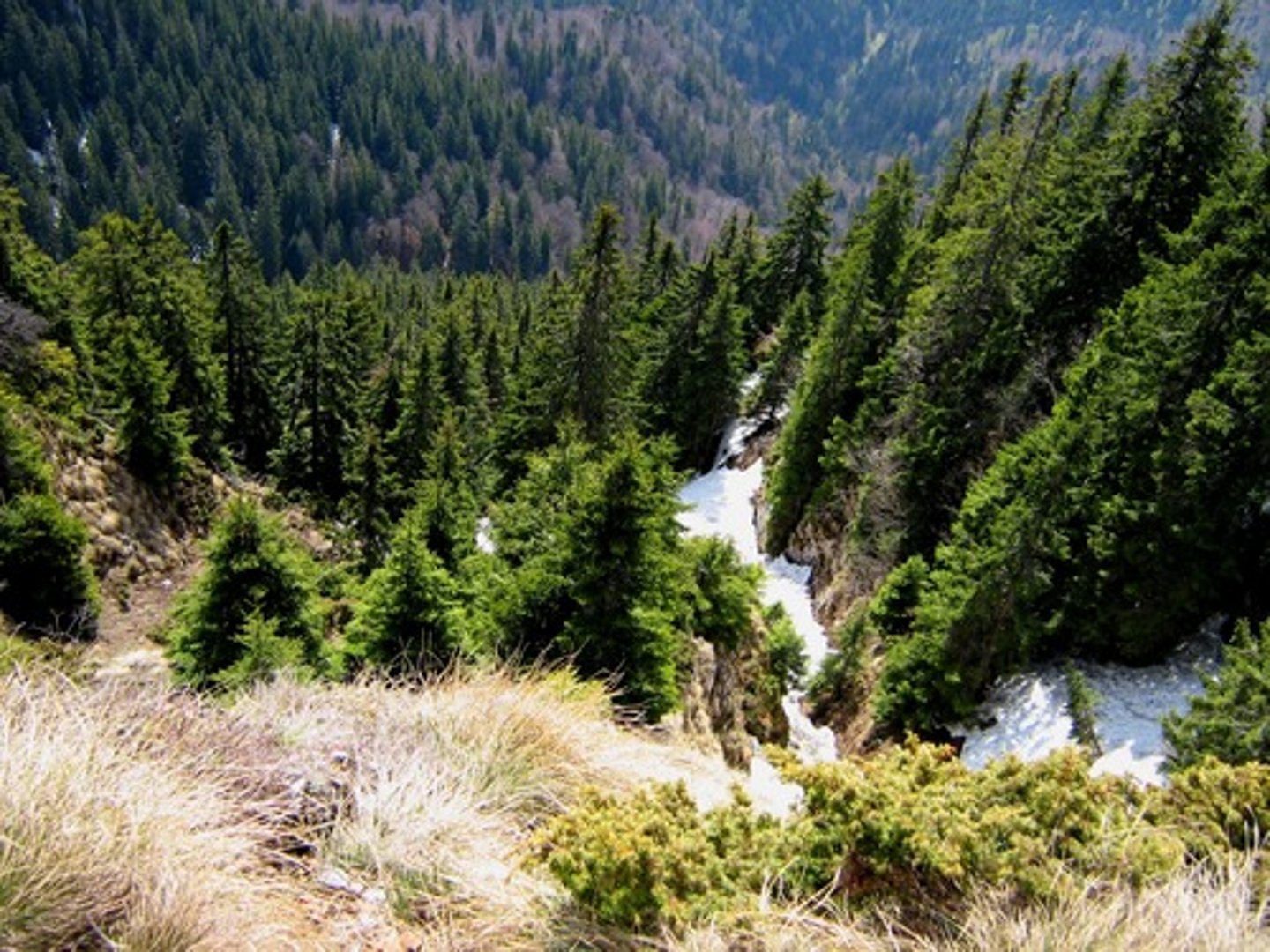
Podsol soils: Soil Biota
- Not much activity here due to cold climate, meaning that the soil is not mixed
... leads to clear horizons developing

Podsol soils: Processes
- The climate has a strong influence here
i.e.
... lack of warmth limits soil biota activity which restricts the mixing of soil and causes humus to slowly decay
... leaching of iron and aluminium, as spring snow melts, and humus causes an iron pan to develop
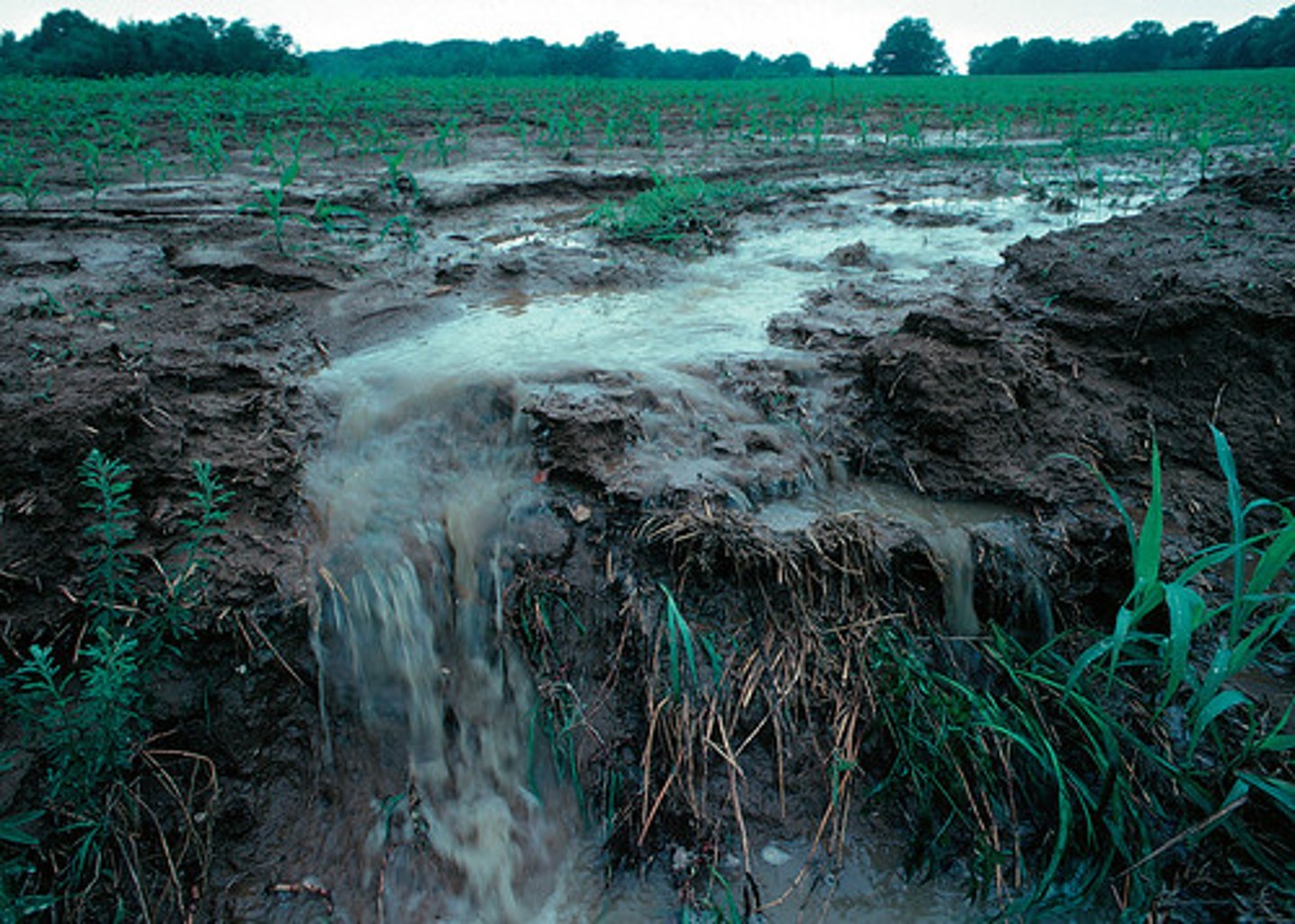
Arable Farming is difficult in podsol soils because...
the acidity and lack of nutrients means few crops can grow
the formation of the hard pan can prevent water drainage and lead to water logging
Podsol soils: Human Use
- Mainly used for commercial forestry plantations (conifers)
- In the UK, podsols are associated with upland sheep farming, heather moorlands, and grouse shooting
- Grouse shooting employs 2500 people and generates £150 million annually
- Rough grazing and recreation use

Brown Earth Soil
mostly between 35 and 55 c north of the equator
... the largest expanses cover western and central Europe, large areas of western Russia, the east coast of America and East Asia
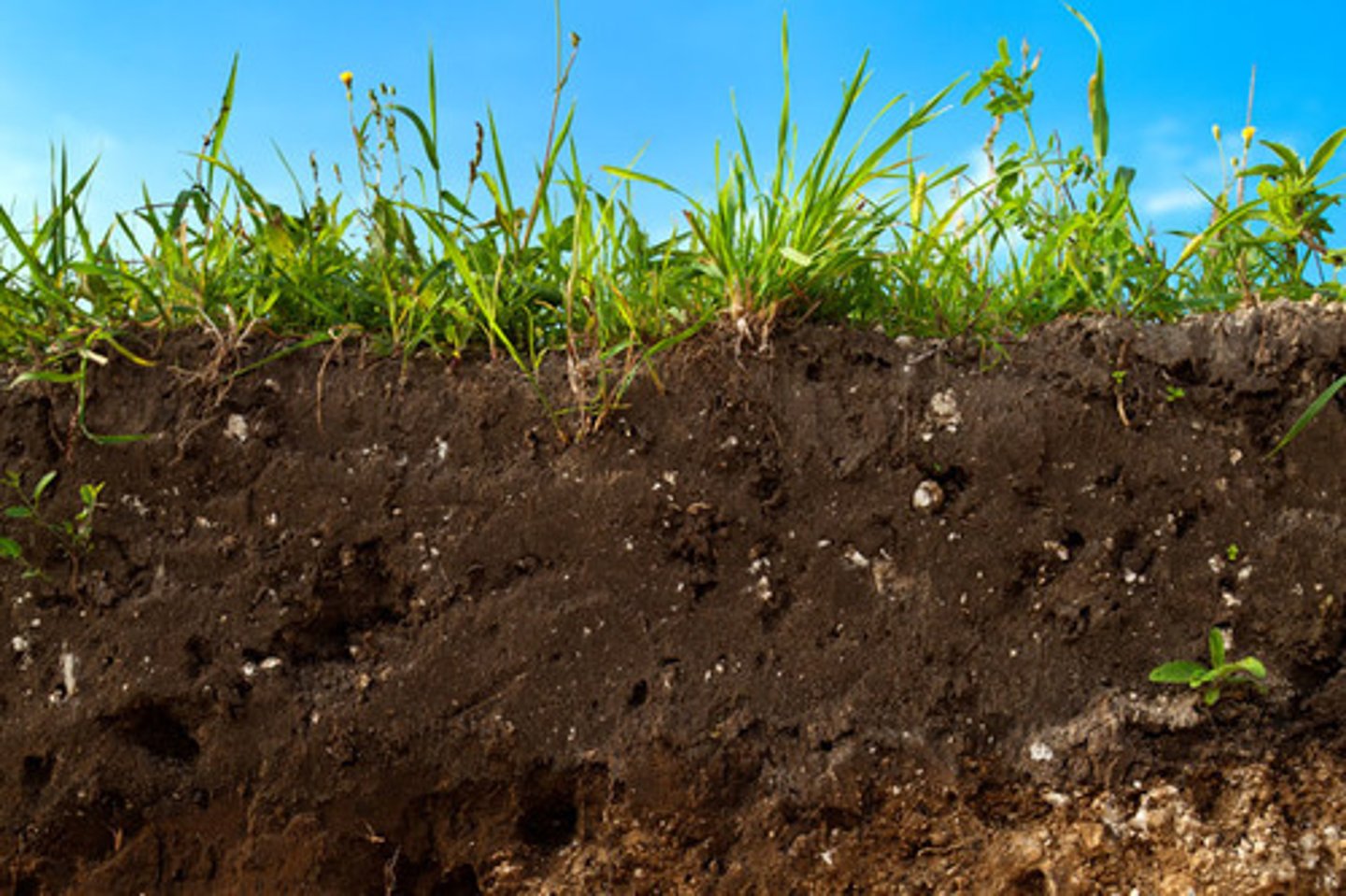
Brown earth soil in England and Wales
brown earth covers 45% of land in England and Whales
Brown Earth Soil: Climate
moderate climate, humid temperate climate
... rainfall totals are moderate, usually below 76cm per year, and temperatures range from 4 c in winter to 18 c in summer
... good conditions for vegetation growth/soil biota

Brown Earth Soil: Relief and Drainage
common in lowland areas (below 1,000 feet) in permeable parent materials
... the most common vegetation types are deciduous woodland and grassland
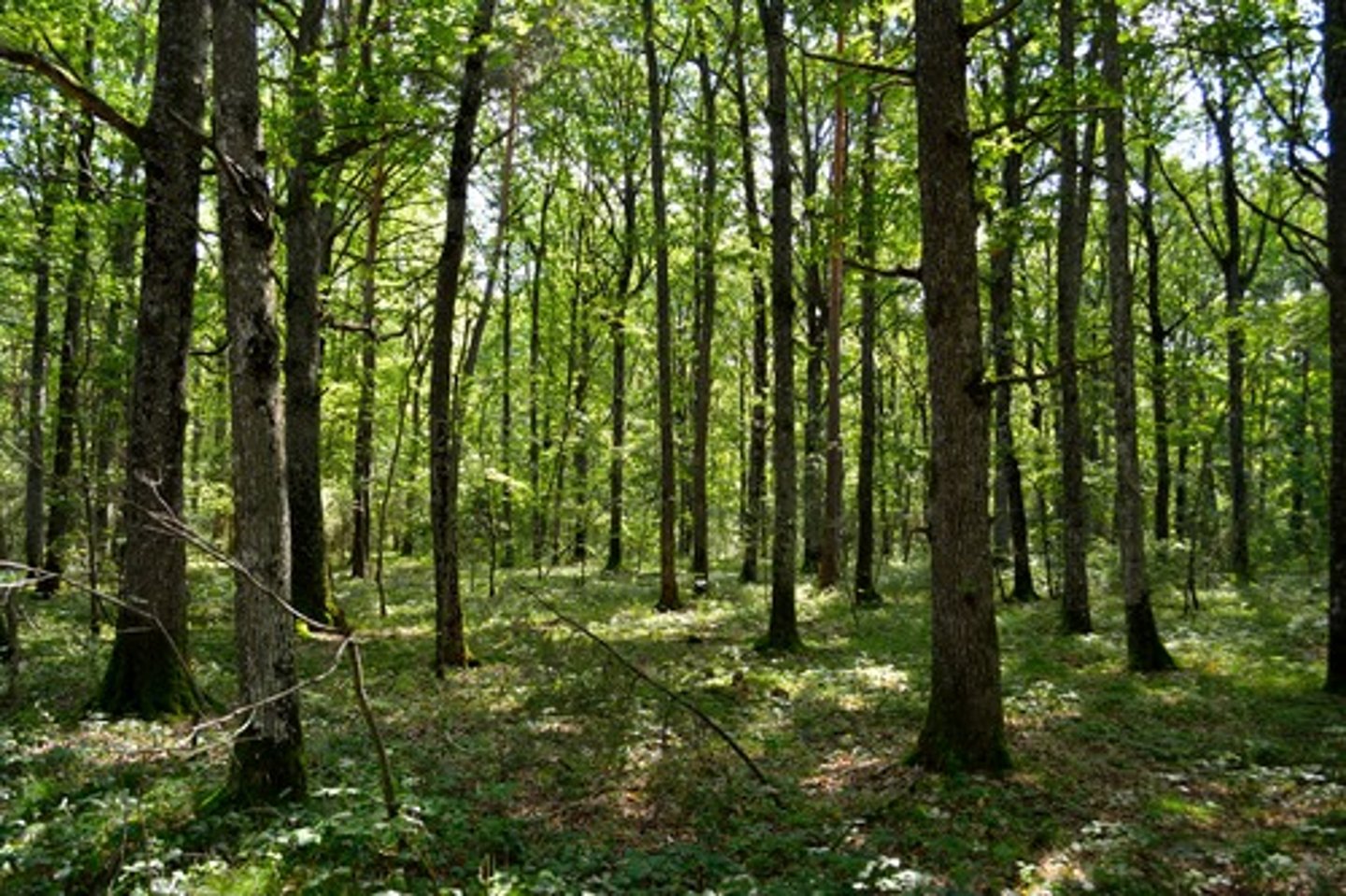
Brown Earth Soil: Soil Biota
warmer temperatures encourage soil biota activity, making horizons less distinct
... leaf litter is more rapidly decomposed
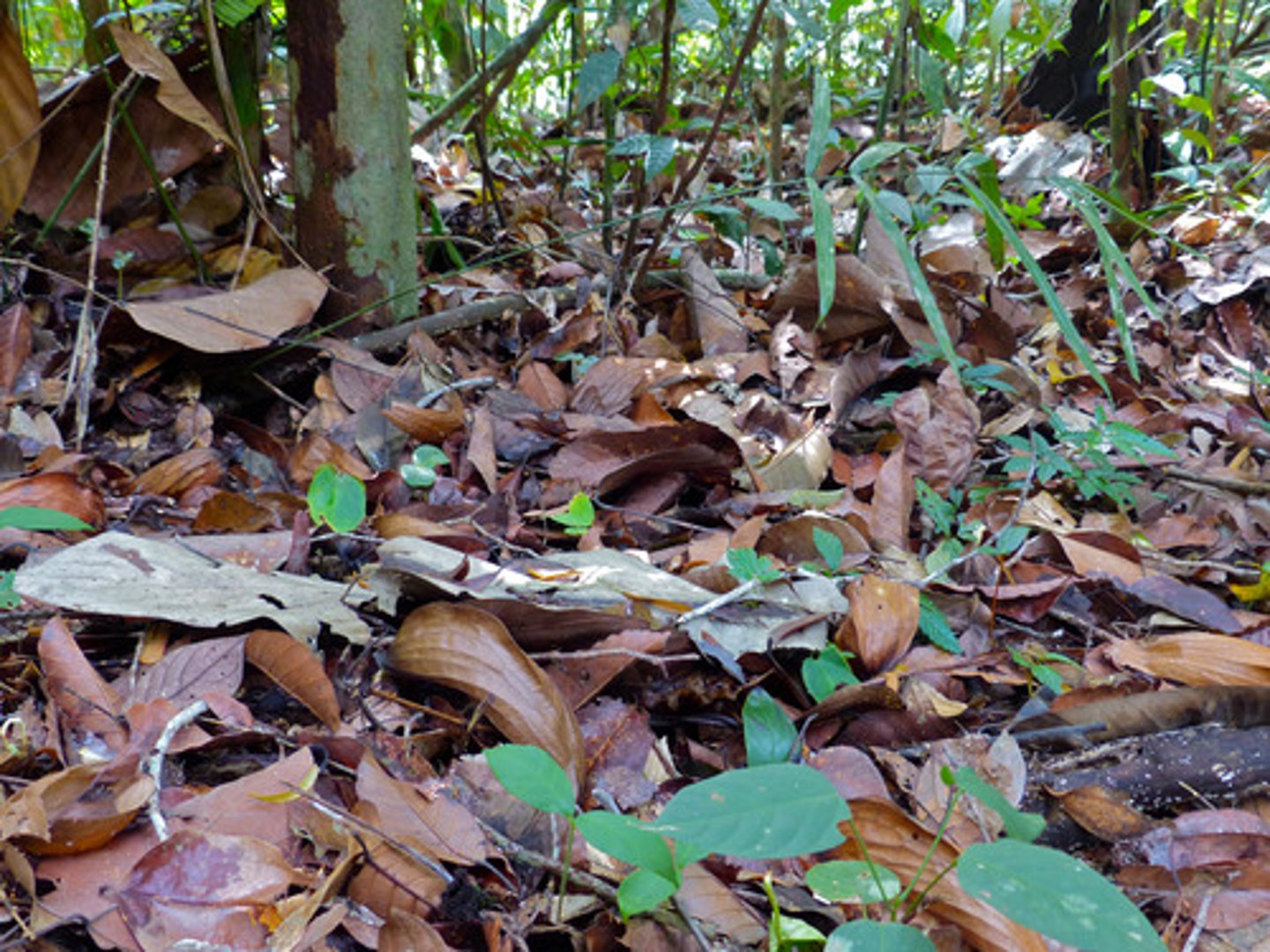
Brown Earth Soil: Natural Vegetation
deciduous forests (ash, beech, oak)
... plentiful leaf litter, resulting humus is deep and only slightly acidic

Brown Earth Soil: Human Use
more fertile and useful than other main soil types, populations are greater here
... given the deep nature of these soils, their free drainage and often high levels of natural fertility, brown soils are often cultivated
... they are usually easy to work throughout the year so a valued for agriculture
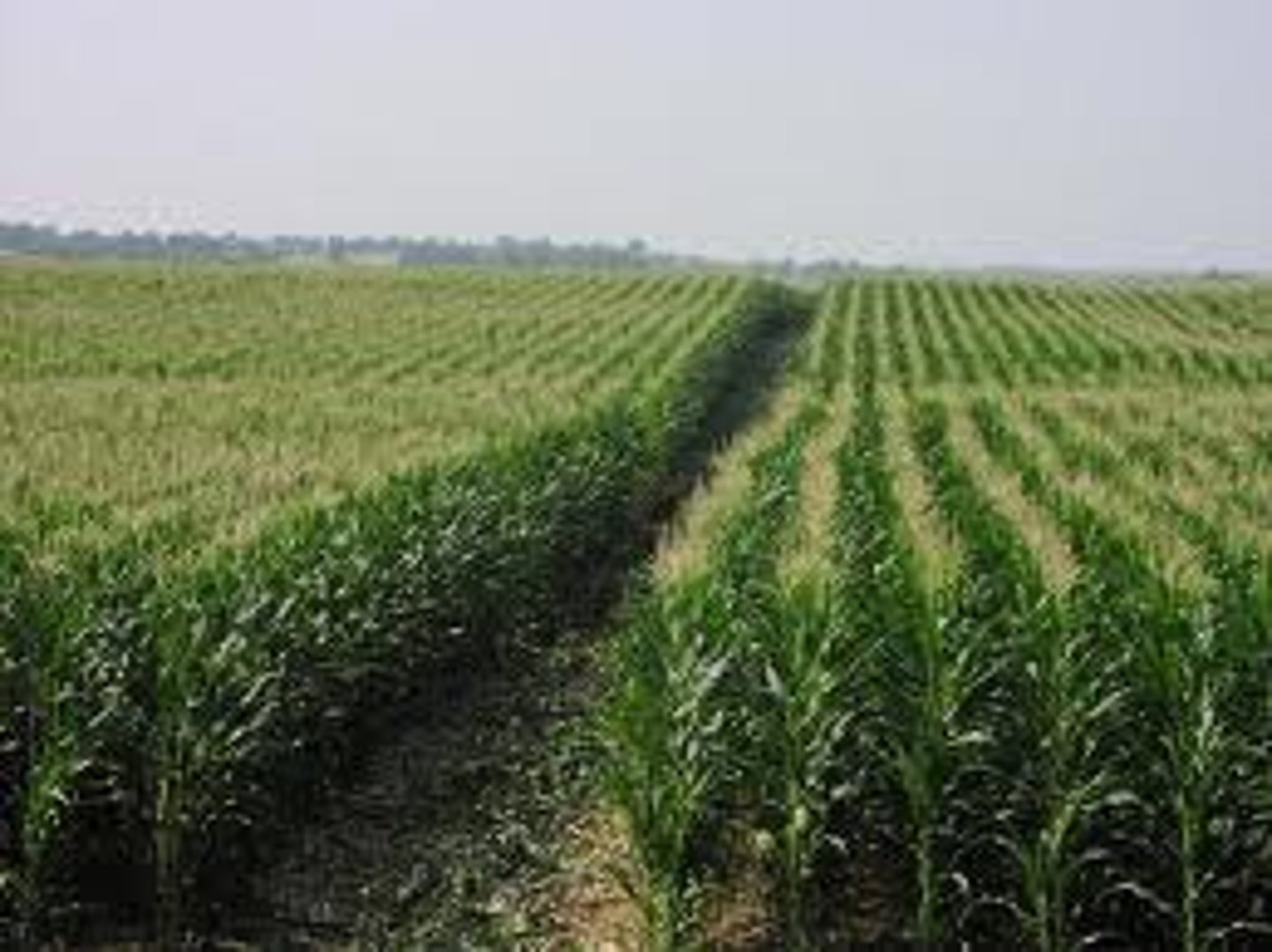
Problems with soil and soil management
1. soil erosion
2. waterlogging
3. salinisation
4. structural deterioation
1. soil erosion
= wearing away of the top layer of soil (topsoil)
- Top soil is the most fertile layer as it contains the most organic nutrient rich materials
- Soil can be eroded by water and wind when exposed
... It's been estimated that 75 billion tonnes of topsoil are lost each year - equivalent to 9 million hectares of productive land lost
... it takes 1000 years to grow 3cm of topsoil
Wind and Water Erosion
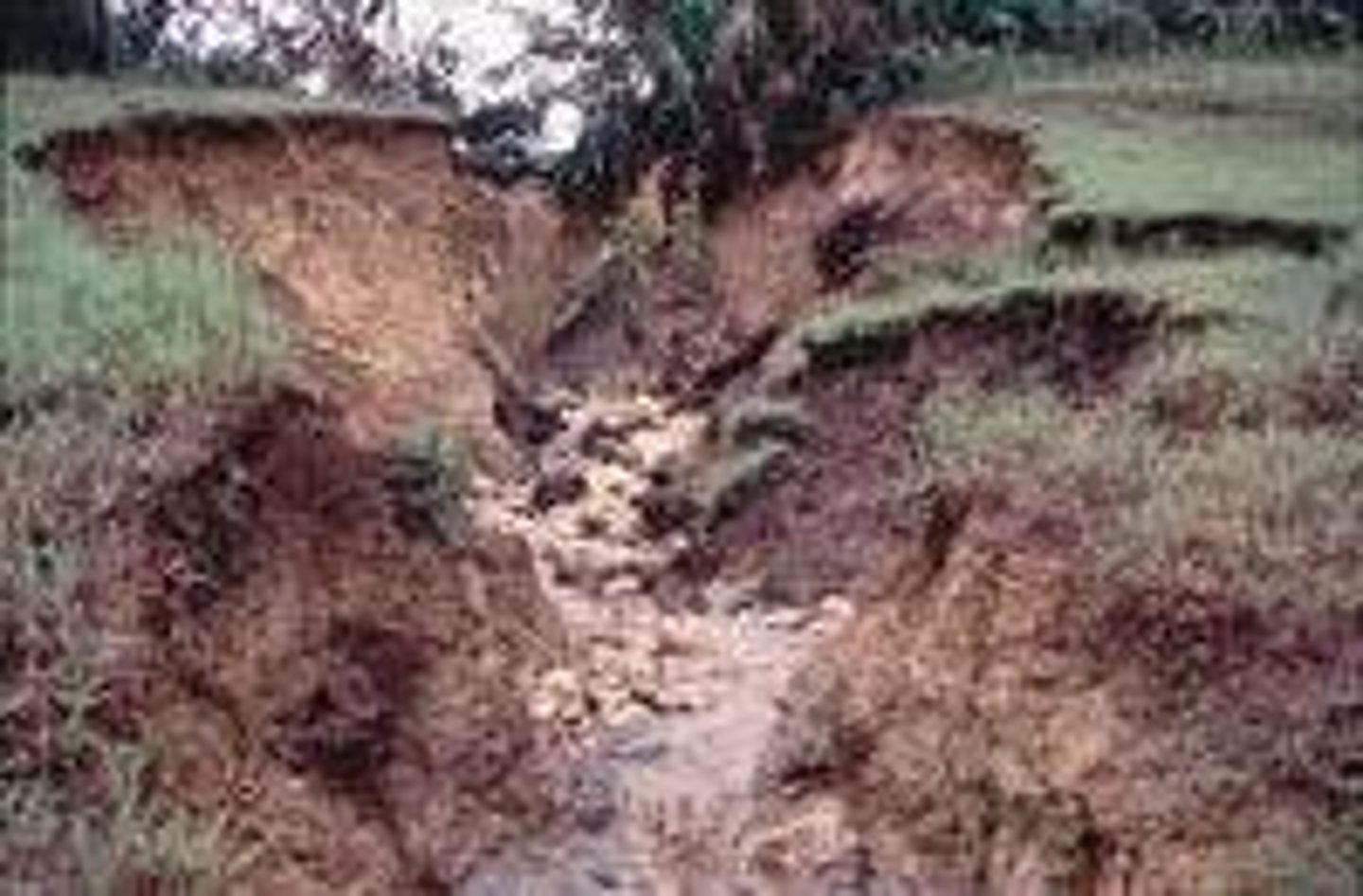
Wind Erosion
Wind erosion occurs when forces exerted by wind overcome the gravitational pull and cohesive forces of soil particles on the ground
... saltation, suspension, creep
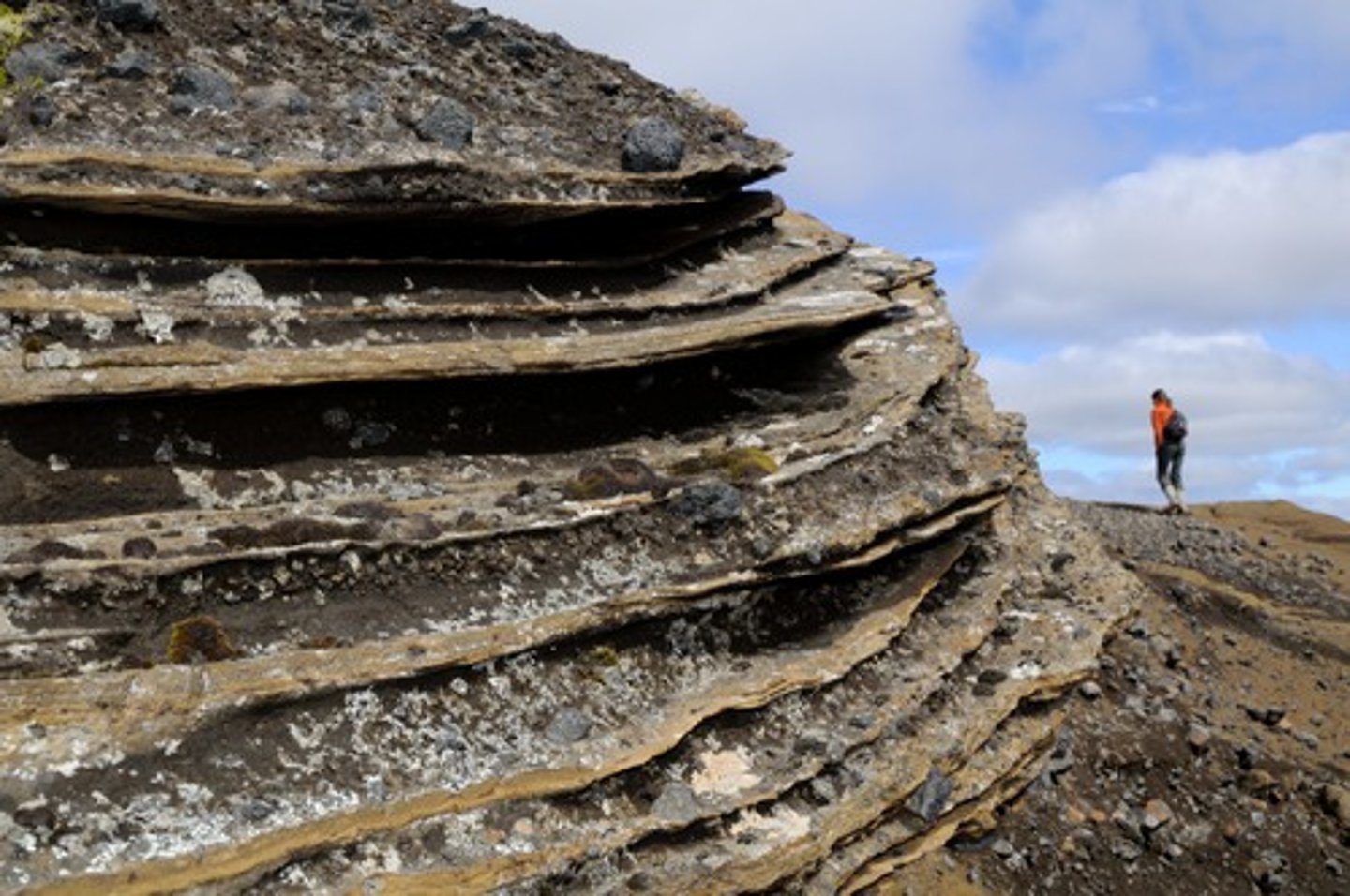
Water Erosion video start at 1:49
Sheet erosion
Rill erosion
Gully erosion
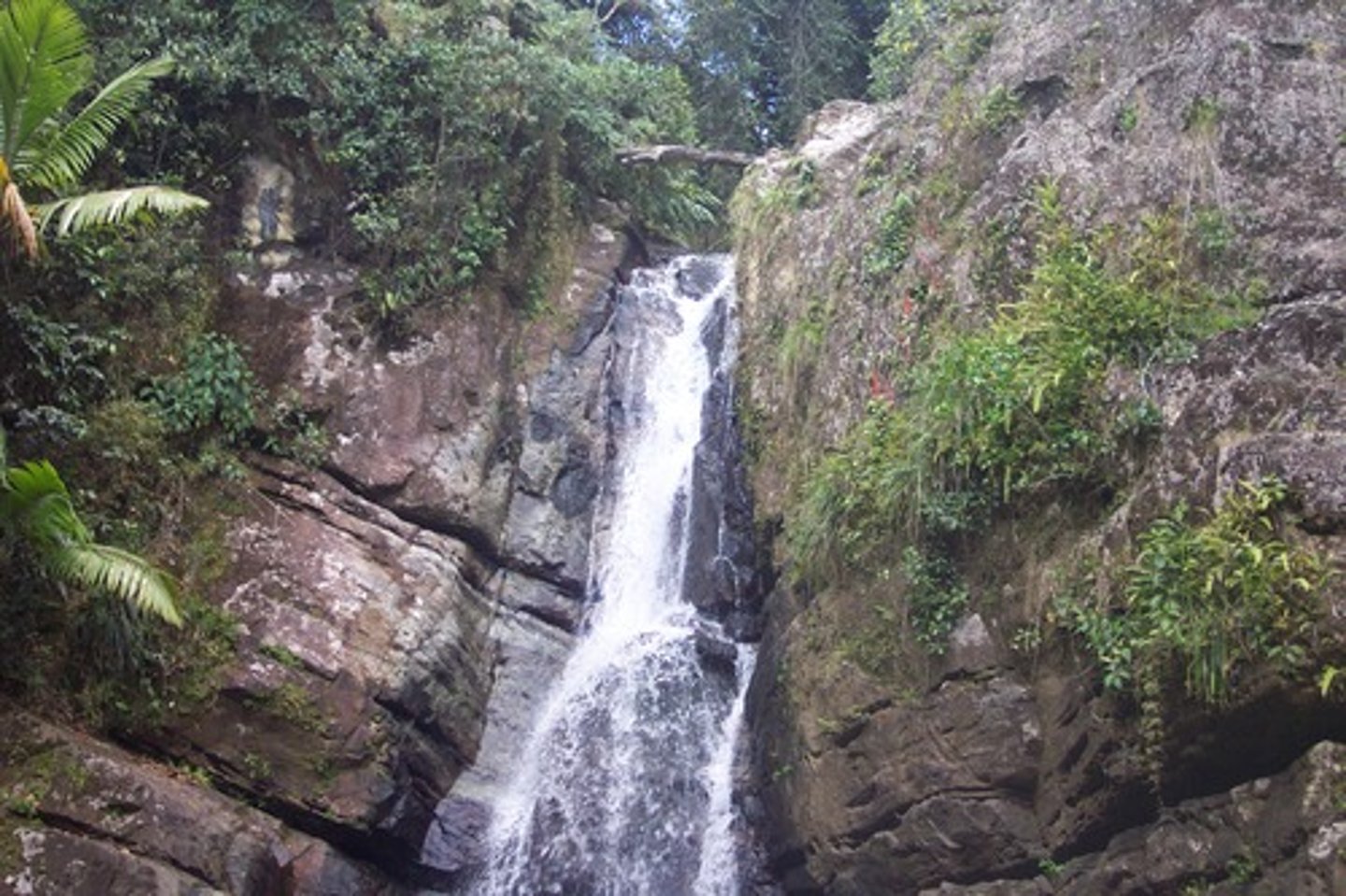
Water Erosion - sheet erosion
= a uniform layer of soil is removed without producing water channels
... caused by the uprooting of root systems by agricultural machinery that are then eroded naturally by rain/wind
Solutions:
- Careful monitoring of soil heights over time
- Early detection
- No-till agriculture to maintain organic matter in upper soil levels

Water Erosion - rill erosion
= removal of soil through small water channels
... occurs when recently cultivated soils are hit by rain, small water channels form and grow larger as more water gains speed and runs through poorly rooted soil
Solutions:
- Increasing surface roughness using grassed waterways
- Preventing the sheet flow from gaining speed by decreasing flow volume
- Plugging channels with mulch or diverting with drainage corridors to prevent water from building up volume and speed
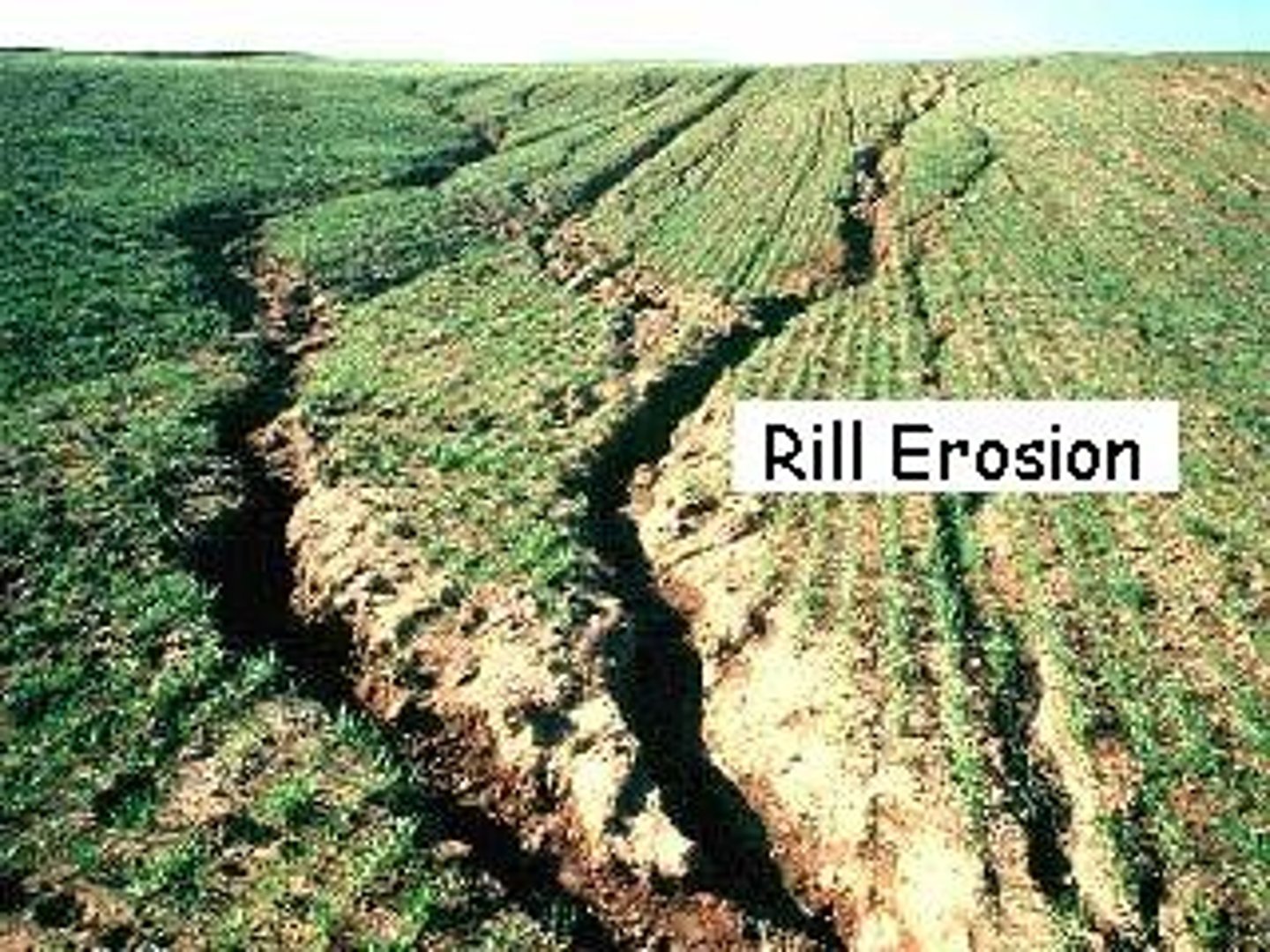
Water Erosion - gully erosion
= deep ruts in the land remove soil
... common in areas of high-water runoff concentration, resulting in deep channels that dig into the surface
Solutions:
- Tilling is a temporary solution, but gullies return to the same place
- Usually require extensive labour to replace lost soil and fill in deep channels
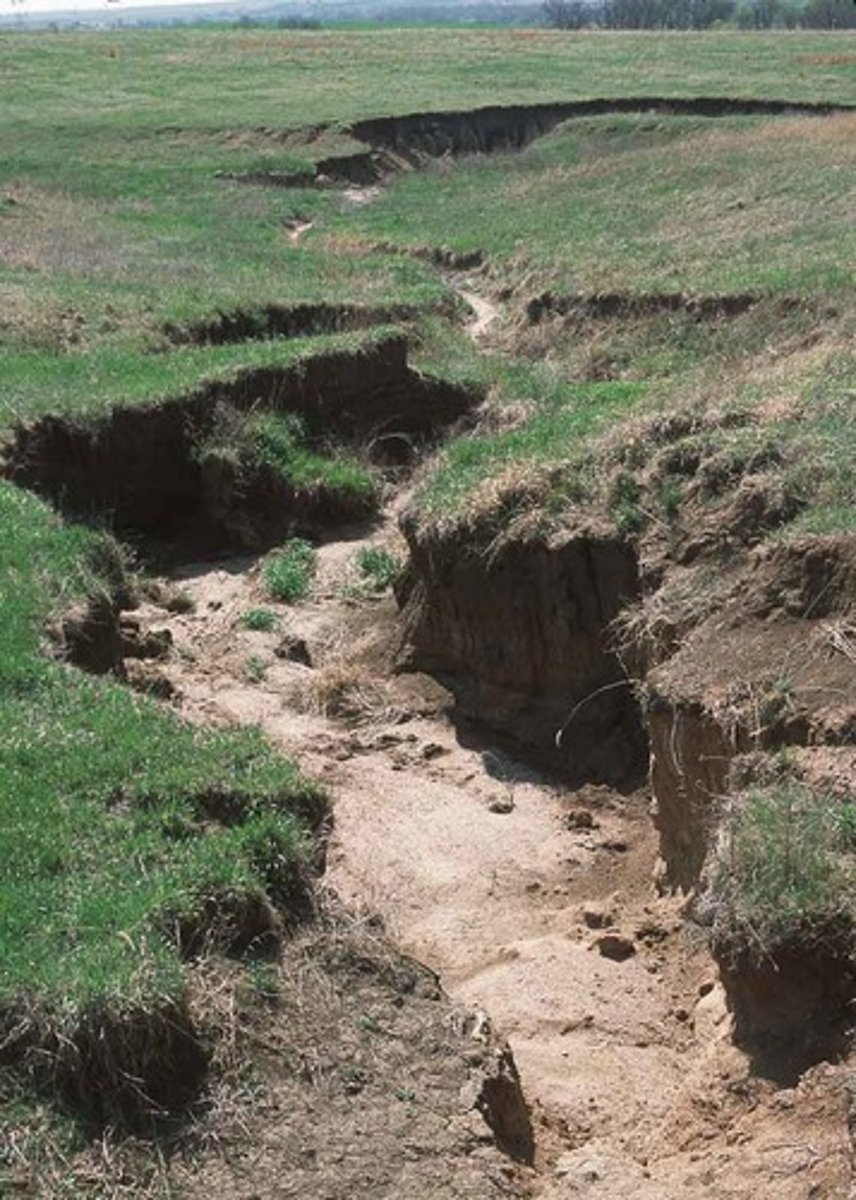
2. Water logging
= when water rather than air fills the pore spaces in the soil, it is said to be waterlogged
... This impairs the ability of plants to respire and so their growth and development is reduced (anaerobic conditions)
Surface Fed and Groundwater Fed
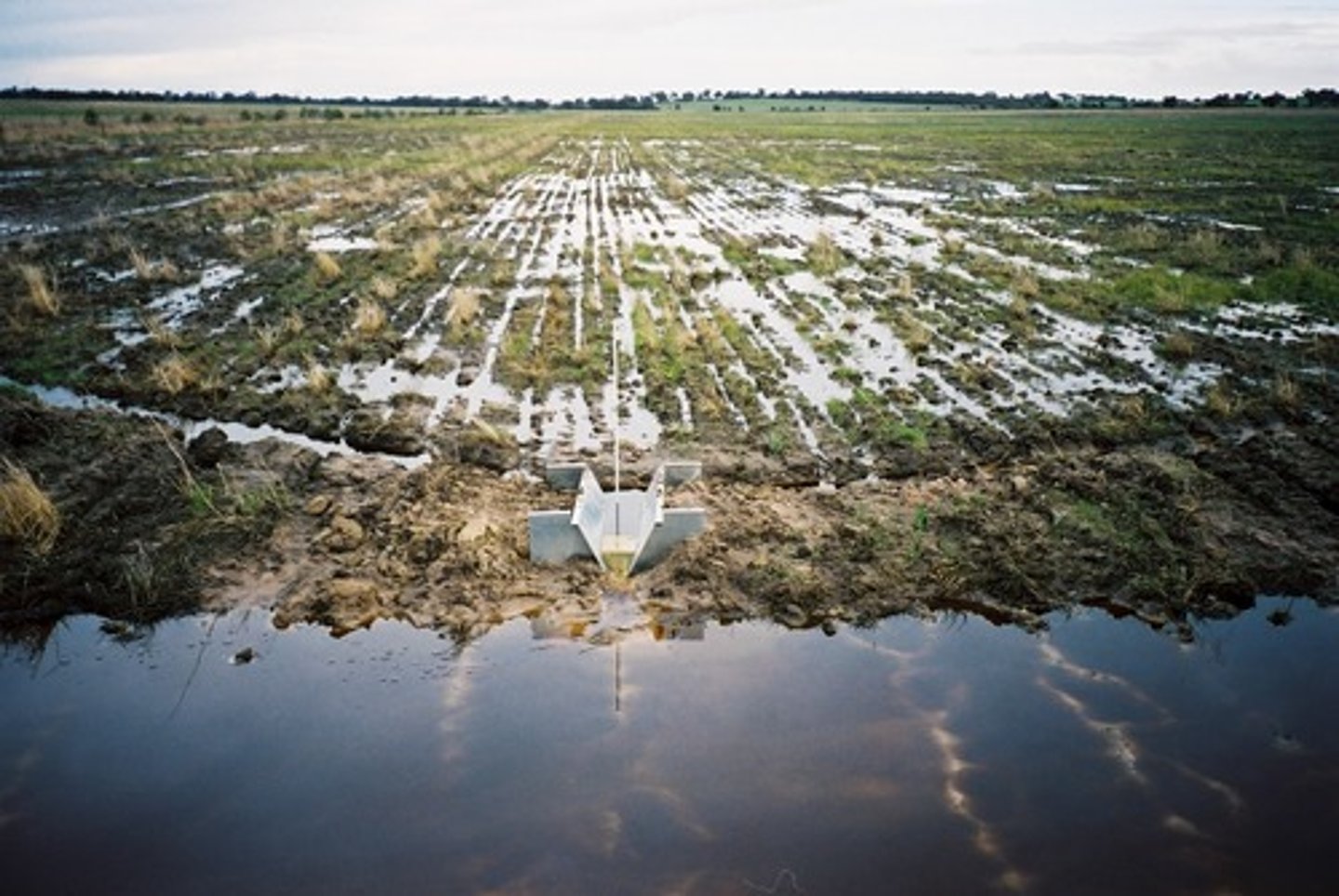
Surface Fed water logging
= an excess of input and not enough percolation and/or evapotranspiration to remove it
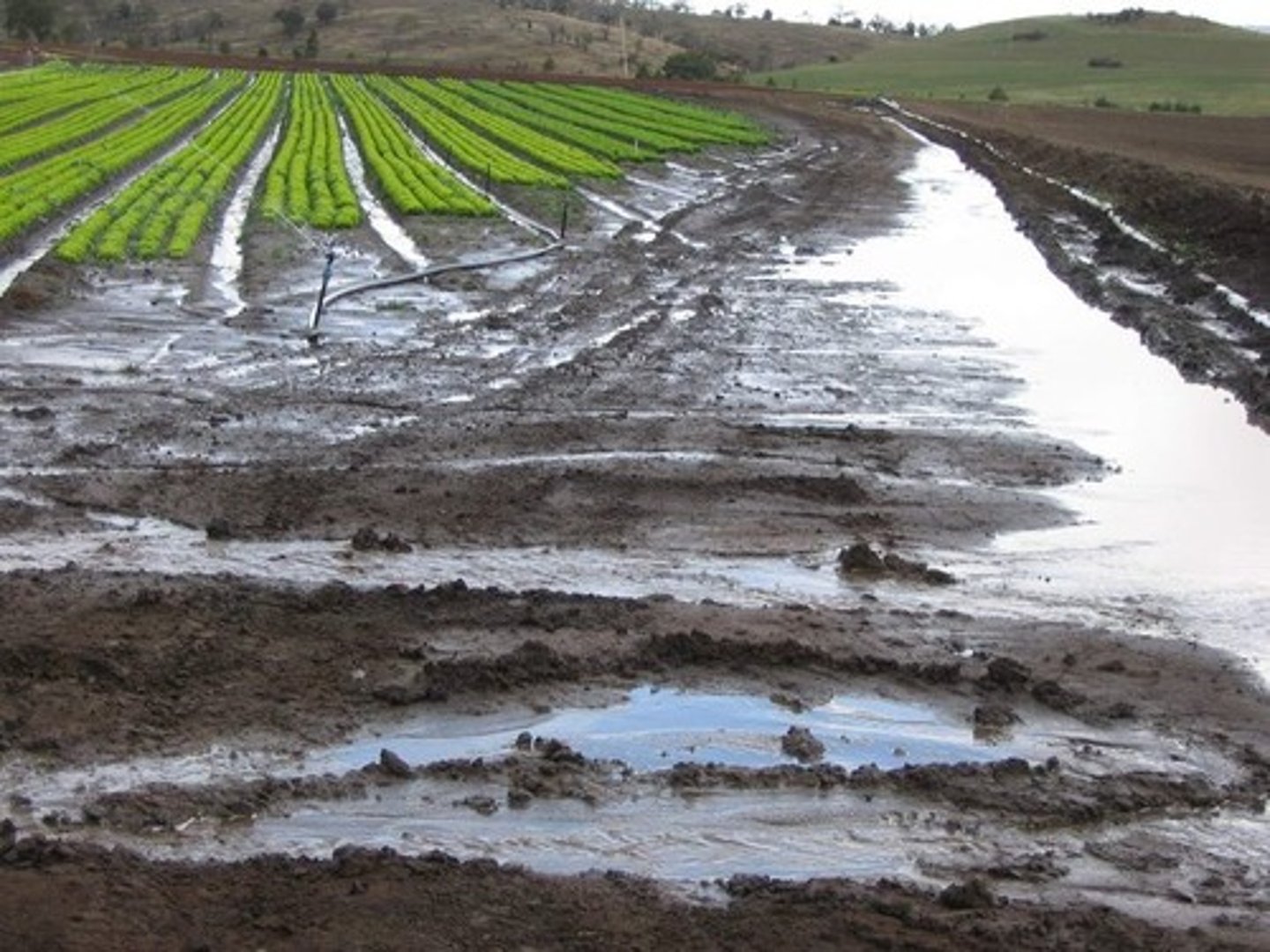
Groundwater Fed water logging
= an excess of groundwater input, not matched by losses from evapotranspiration
e.g., The iron pan reduced the soil storage capacity so less percolation can occur
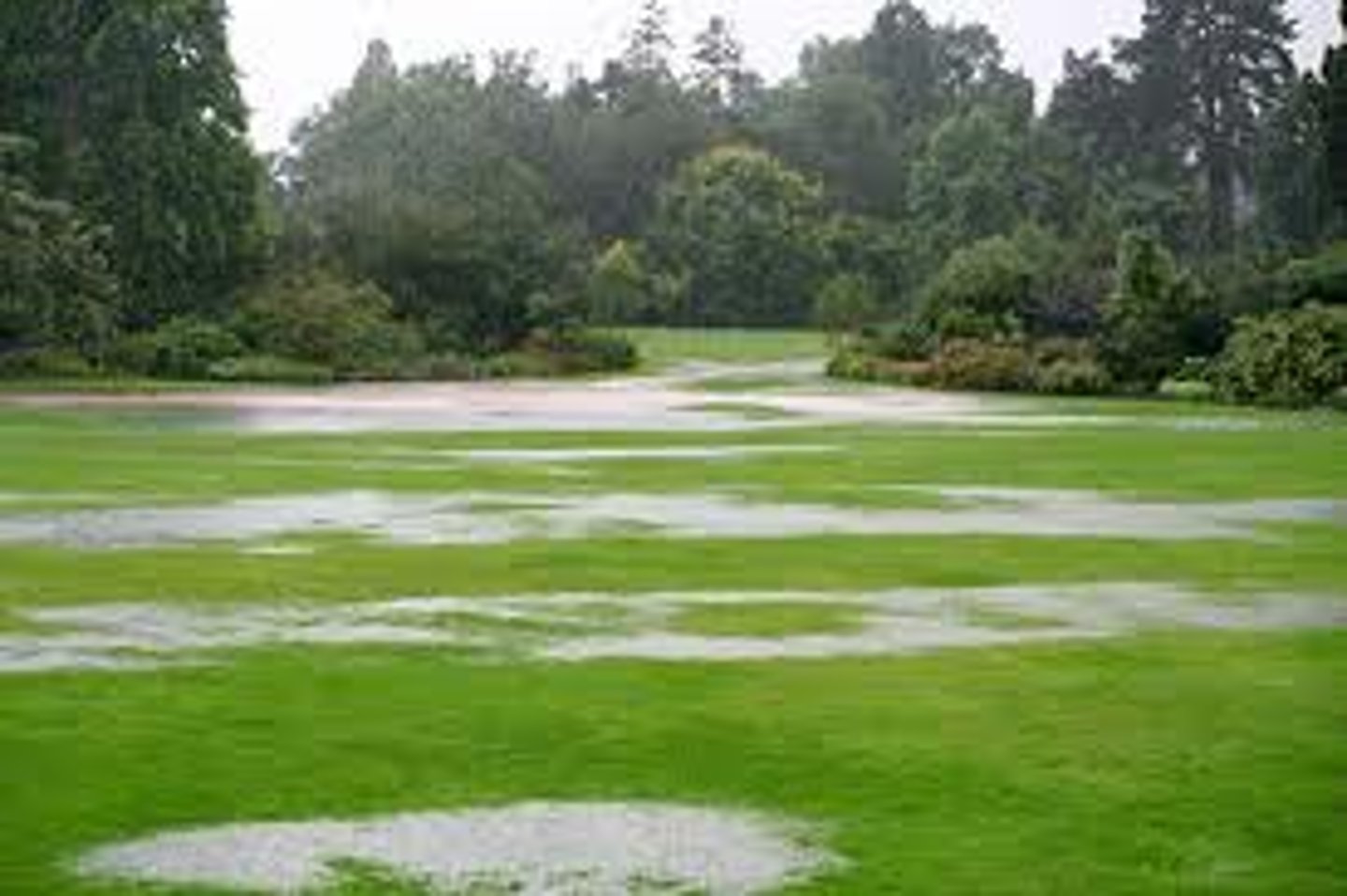
3. Salinisation
= refers to the build-up of salts in the soil
- Eventually leads to toxic levels for plants (3000-6000 ppm of salt)
- It can occur naturally but mostly occurs in hot, semi-arid areas that require irrigation
- Irrigation water contains salt and there is not enough rainwater to flush out the salt
- Salt remains in soil, and this decreases the osmotic potential of the soils so plants cannot get water from soil
... reports say that 10-20% of soil worldwide is affected
e.g., China's Northern Plain, Indus Plain of Pakistan

solutions for salinisation
- reduce irrigation
- flushing soil (expensive and wastes water)
- switch to salt tolerant crops (such as barley, cotton, sugar beets)
- not growing crops for 2-5 years
- installing underground drainage systems (expensive)
4. Structural Deterioation
= the structure of the soil is the arrangement of soil particles into groupings (called peds)
--> it is an important indicator if the workability of the soil (good soil is well aggregated)
... under natural conditions, the breakdown of soil structure is rare but where agriculture is practiced, change in soil structure are common
- Compaction by heavy machinery and salinisation can make the soil structure change and it can become almost impenetrable to water and roots
- Gully erosion = where tractors create ruts in the soil that allows water to enter "channels" within ruts and take away the top level of soil.

The two main categories of soil deterioration are...
- Those associated with a net reduction in soil organic matter in the topsoil (harvesting crops, urbanisation, "slash and burn", leaching)
- Compaction (due to ploughing)
... pressure on the soil compressing it
... these make the soil less cohesive and more vulnerable to erosion
Solutions for structural deterioration
Solutions:
- Fertilisers
- Furlough (not planting anything for long period of time)
- Plant trees
how much of our food is directly produced on our soils?
95%
Soil Management
1. Agro-ecology
2. Organic farming
3. Agroforestry
4. Zero tillage
5. Conservation agriculture
Agro-ecology
= used ecological theory to study and manage agricultural systems in order to make them more productive and better at conserving natural resources
(use of technology, local and traditional initiatives)
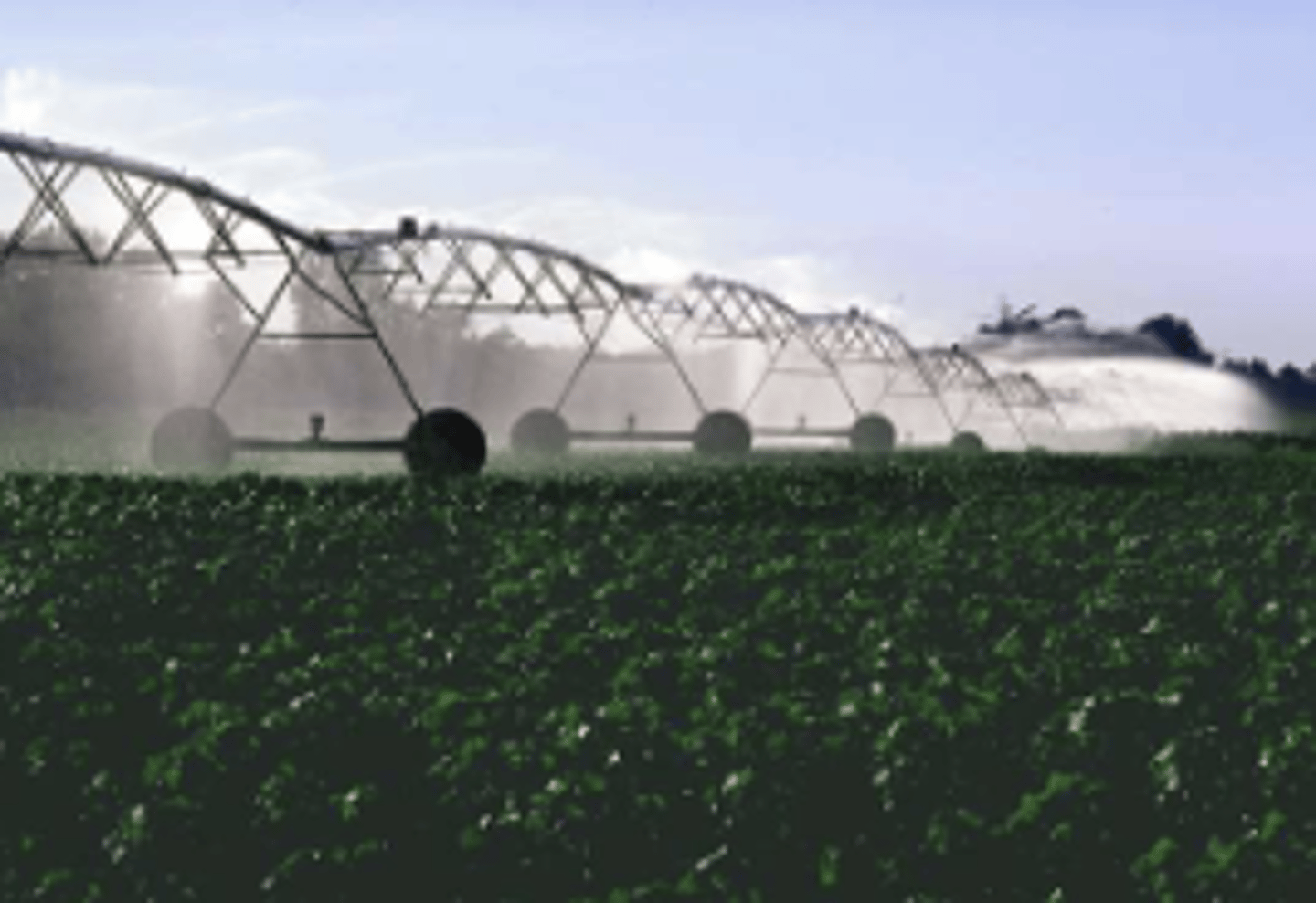
Organic Farming
= agricultural production without the use of synthetic chemicals or genetically modified organisms, growth regulators and livestock feed additives.
...Emphasises holistic management approach where rotations and animals play integral roles in the system, concerned with soil fertility
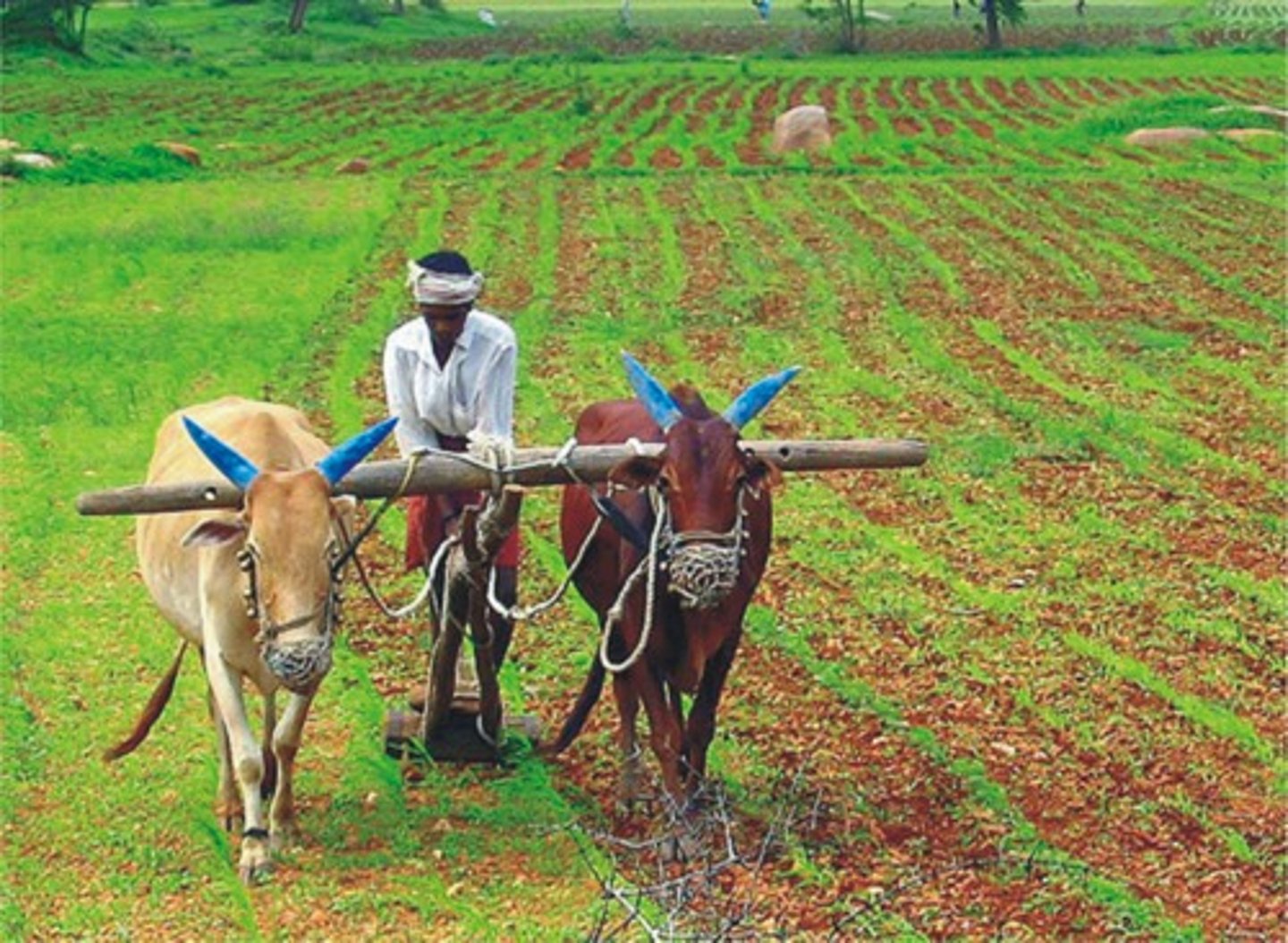
Agroforestry
= systems include both traditional and modern land use systems where trees are managed together with crops and/or animal production systems in agricultural settings
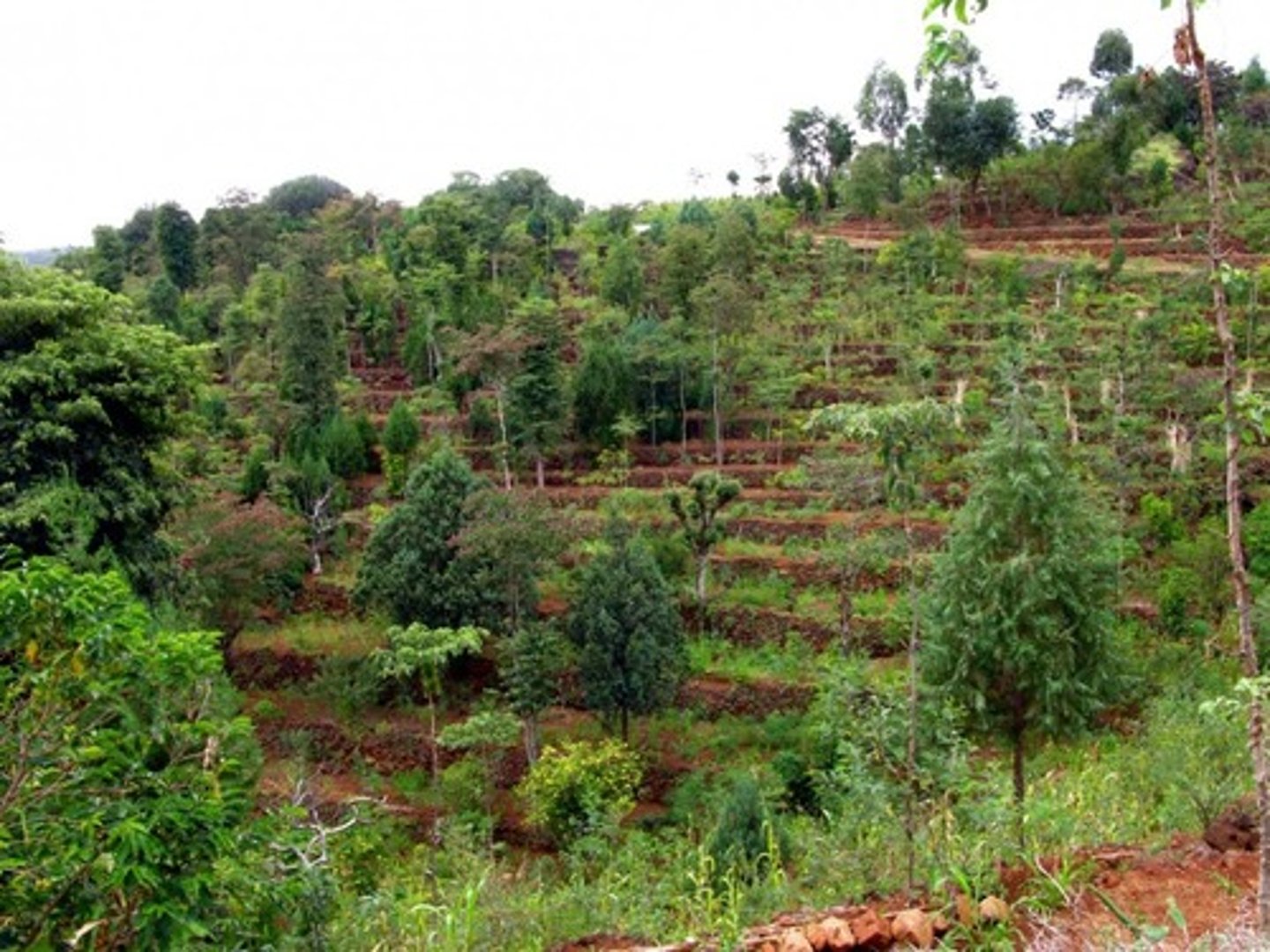
Zero Tillage
= maintains a permanent or semi-permanent organic soil cover (e.g., growing crops or dead mulch) that protects the soil from the sun, rain and wind and allows soil micro-organisms and fauna to take on the task of "tilling" and soil nutrient balancing
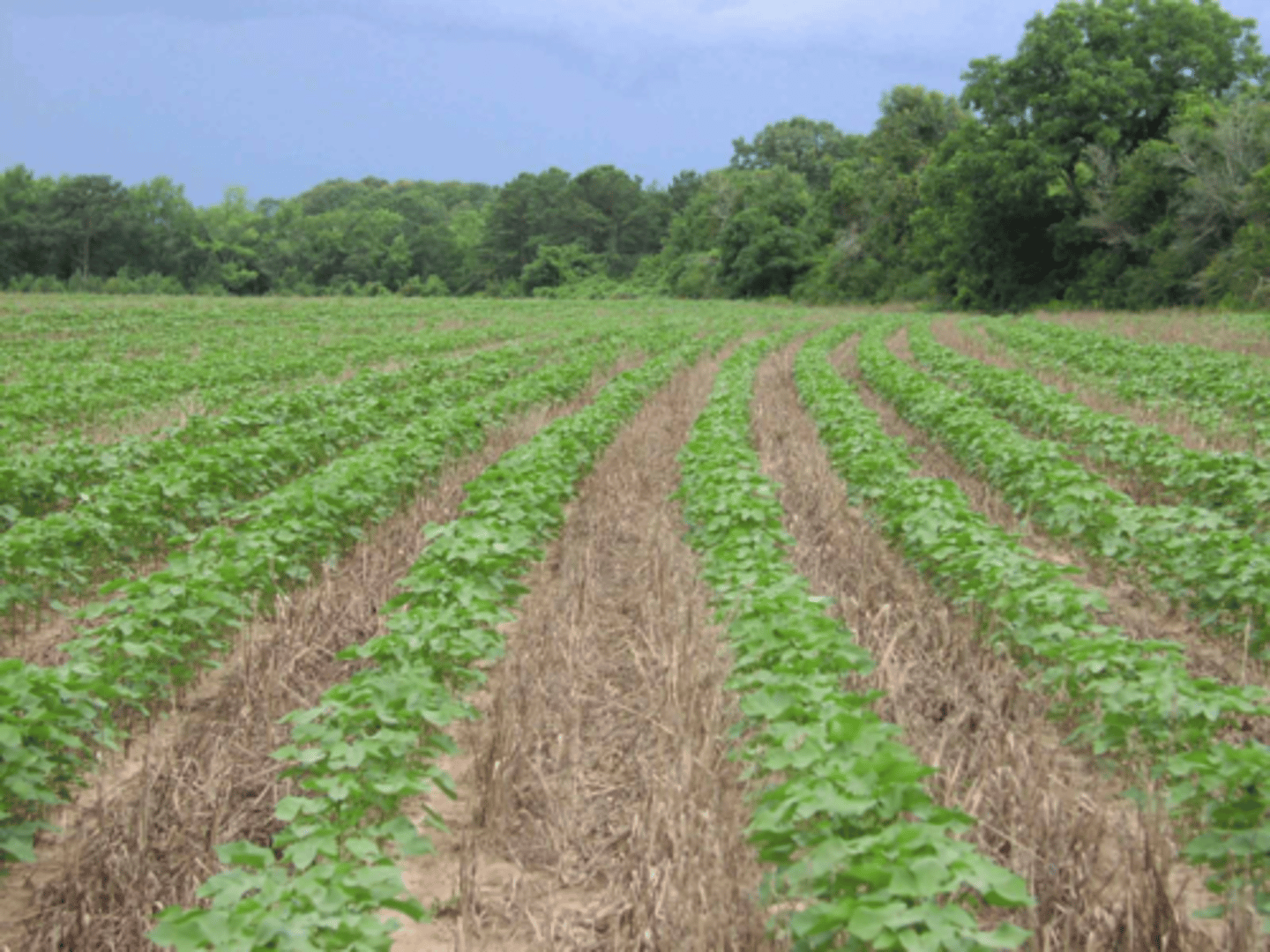
Conservation agriculture
= improving soil conditions, reducing land degradation, boosting yields by minimising soil disturbances, permanent soil cover and crop rotations
